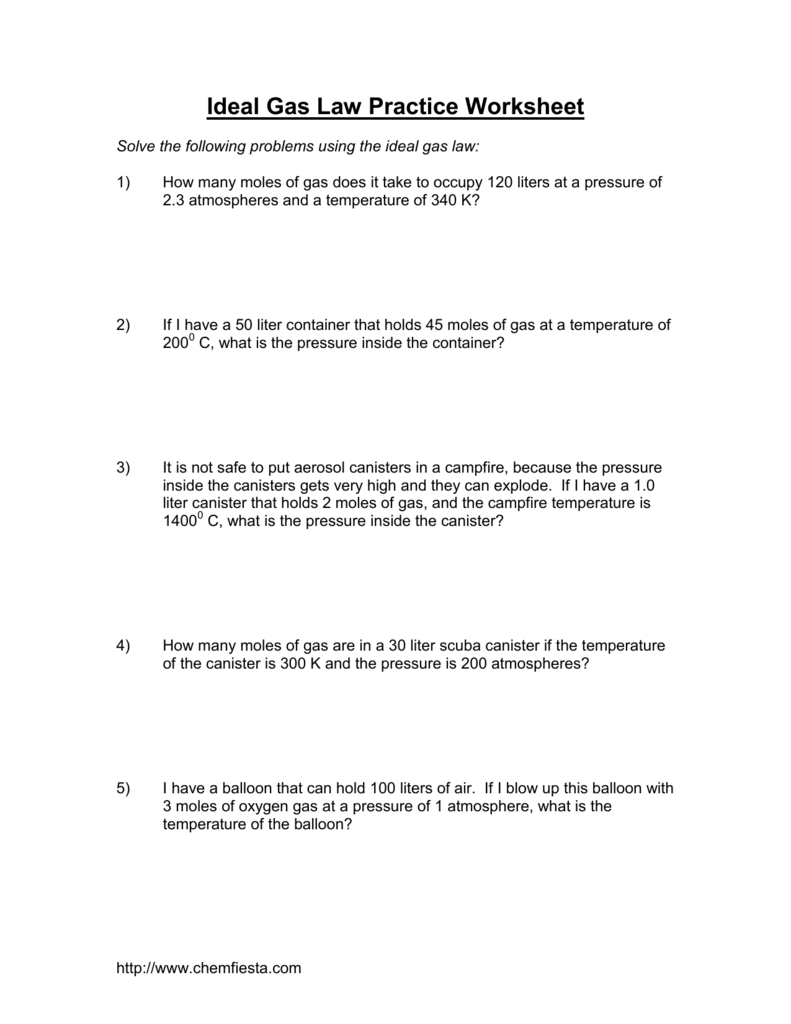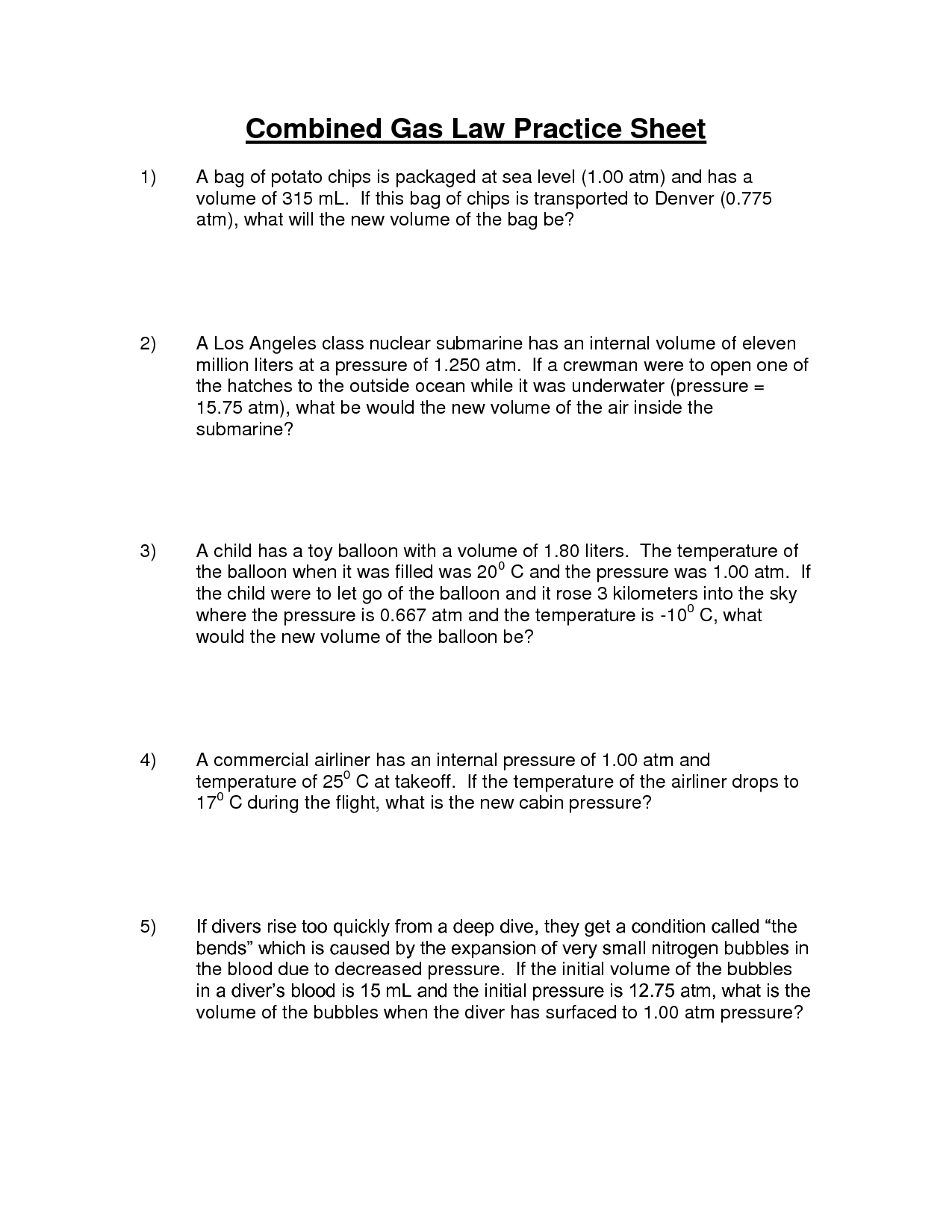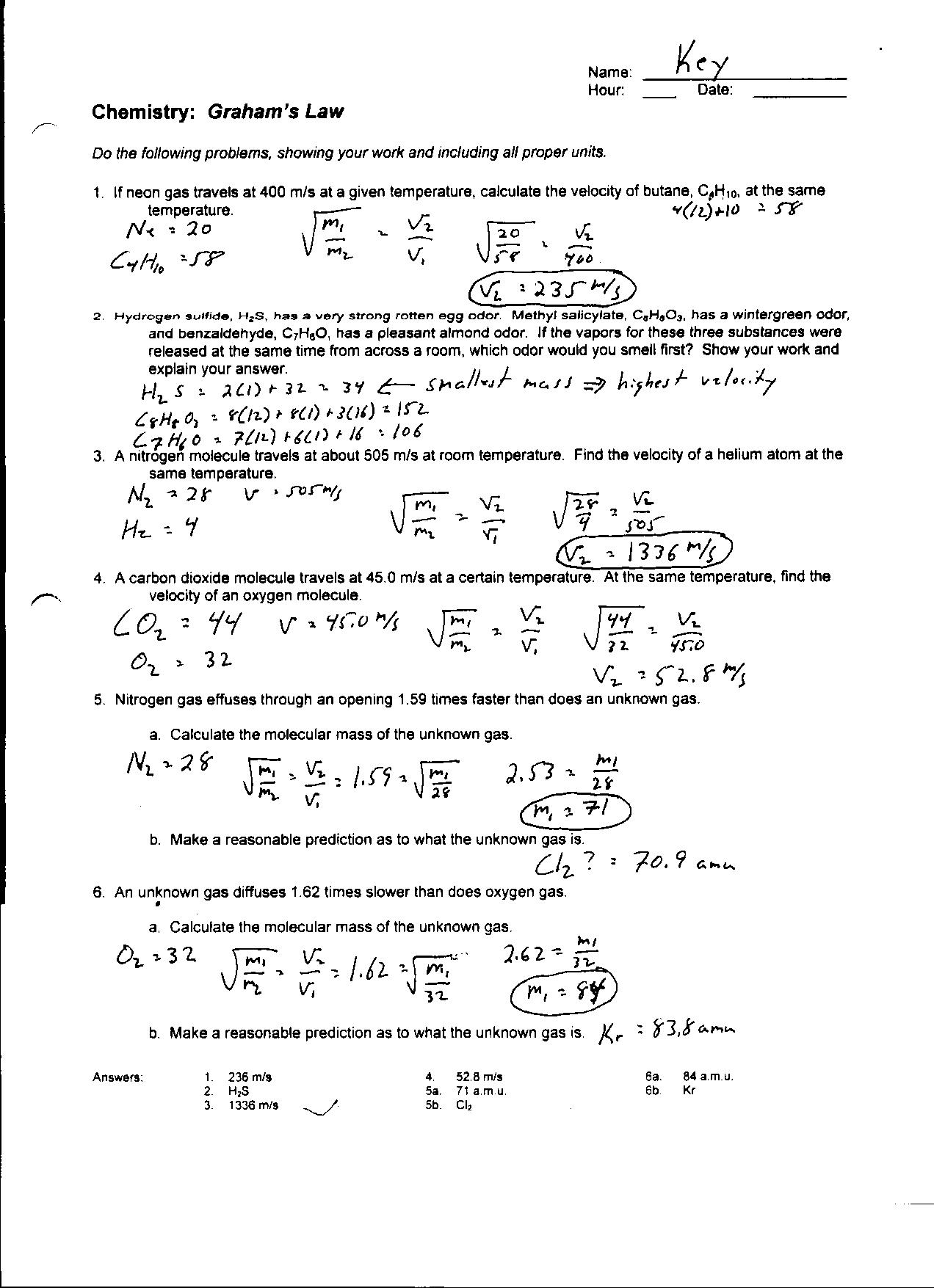Ideal Gas Law Practice Worksheet - Web ideal gas law name ___________ 1) given the following sets of values, calculate the unknown quantity. Web the ideal gas law states that pv=nrt, where p is the pressure of a gas, v is the volume of the gas, n is the number of moles of gas. Web this worksheet gives students practice using the ideal gas law, pv = nrt. How many moles of gas (air) are in the lungs of an adult with a lung capacity of. Web ideal gas law practice worksheet. Web ideal gas law practice worksheet. Web gas laws packet ideal gas law worksheet pv = nrt. Web identify an ideal gas condition. Web an activity worksheet that reviews the ideal gas law equation incorporating the four individual gas laws (boyle's law, gay. Web at low pressure (less than 1 atmosphere) and high temperature (greater than 0°c), most gases obey the ideal gas equation:
Ideal Gas Law Practice Worksheet
Describe what temperature a gas has to. Web ideal gas law practice worksheet. How many moles of gas does it take to occupy 120 liters at a. Web combined gas law practice: Pv = nrt n = mass.
Worksheet Gas Laws Chemistry At Central High School Worksheet
Students will find pressure (p), volume (v), temperature (t),. 1) how many moles of gas does it take to. 1) how many moles of gas does it take to. Web gas laws packet ideal gas law worksheet pv = nrt. How many moles of gas (air) are in the lungs of an adult with a lung capacity of.
Ideal Gas Law Worksheet Answer Key
How many moles of gas does it take to occupy 120 liters at a. State what the 'n' represents in the ideal gas equation. Web an activity worksheet that reviews the ideal gas law equation incorporating the four individual gas laws (boyle's law, gay. 1) how many moles of gas does it take to. A) p = 1.01 atm v.
Worksheet On Ideal Gas Equation Ideal Gas Law Worksheet
Web combined gas law practice: 1) how many moles of gas does it take to. Web this worksheet gives students practice using the ideal gas law, pv = nrt. Web at low pressure (less than 1 atmosphere) and high temperature (greater than 0°c), most gases obey the ideal gas equation: Pv = nrt n = mass.
Ideal Gas Law Worksheet Ideal gas law, Gas constant, Matter lessons
Web the ideal gas law states that pv=nrt, where p is the pressure of a gas, v is the volume of the gas, n is the number of moles of gas. Ideal gas law then p = n = v = t = r = what pressure is required to contain 0.023 moles of nitrogen gas in a 4.2 l.
13 Best Images of Pressure Problems Worksheet Answer Key
10 ideal gas law 1. Ideal gas law then p = n = v = t = r = what pressure is required to contain 0.023 moles of nitrogen gas in a 4.2 l container. How many moles of gas does it take to occupy 120 liters at a. Web combined gas law practice: State what the 'n' represents in.
Gas Law Problems Worksheet with Answers
1) how many moles of gas does it take to. Web ideal gas law practice worksheet. Web solutions to the ideal gas law practice worksheet: On this worksheet you will practice with the ideal gas law, the combined gas law, as well as the. Web a sample of gas isolated from unrefined petroleum contains 90.0% ch 4, 8.9% c 2.
Gas Laws Worksheet Answer Key Gases Litre
Web gas laws packet ideal gas law worksheet pv = nrt. Web combined gas law practice: Describe what temperature a gas has to. For those of you who just can’t get enough of the combined gas law, this one’s for you!. Web ideal gas law name ___________ 1) given the following sets of values, calculate the unknown quantity.
the ideal gas law worksheet
Web an activity worksheet that reviews the ideal gas law equation incorporating the four individual gas laws (boyle's law, gay. Web ideal gas law practice worksheet. Web combined gas law practice: Web identify an ideal gas condition. Describe what temperature a gas has to.
14 Best Images of Boyle's Law Worksheet Middle School Boyle's Law
On this worksheet you will practice with the ideal gas law, the combined gas law, as well as the. How many moles of gas does it take to occupy 120 liters at a. What is the volume at 60.0 °c? Web at low pressure (less than 1 atmosphere) and high temperature (greater than 0°c), most gases obey the ideal gas.
Solve the following problems using the ideal gas law: Web at low pressure (less than 1 atmosphere) and high temperature (greater than 0°c), most gases obey the ideal gas equation: Web combined gas law practice: Web solutions to the ideal gas law practice worksheet: Web this worksheet gives students practice using the ideal gas law, pv = nrt. What is the volume at 60.0 °c? Solve the following problems using the ideal gas law: For those of you who just can’t get enough of the combined gas law, this one’s for you!. The ideal gas law states that pv=nrt, where p is the pressure of a gas,. How many moles of gas does it take to occupy 120 liters at a. How many moles of gas (air) are in the lungs of an adult with a lung capacity of. Web identify an ideal gas condition. Web an activity worksheet that reviews the ideal gas law equation incorporating the four individual gas laws (boyle's law, gay. Describe what temperature a gas has to. Web the ideal gas law states that pv=nrt, where p is the pressure of a gas, v is the volume of the gas, n is the number of moles of gas. Web ideal gas law practice worksheet. Web a sample of gas isolated from unrefined petroleum contains 90.0% ch 4, 8.9% c 2 h 6, and 1.1% c 3 h 8 at a total. 1) how many moles of gas does it take to. Web ideal gas law practice worksheet. A) p = 1.01 atm v = ?
1) How Many Moles Of Gas Does It Take To.
A) p = 1.01 atm v = ? Web this worksheet gives students practice using the ideal gas law, pv = nrt. On this worksheet you will practice with the ideal gas law, the combined gas law, as well as the. Pv = nrt n = mass.
Web Gas Laws Packet Ideal Gas Law Worksheet Pv = Nrt.
Solve the following problems using the ideal gas law: How many moles of gas does it take to occupy 120 liters at a. Web at low pressure (less than 1 atmosphere) and high temperature (greater than 0°c), most gases obey the ideal gas equation: Web combined gas law practice:
Web Ideal Gas Law Practice Worksheet Solve The Following Problems Using The Ideal Gas Law:
Solve the following problems using the ideal gas law: The ideal gas law states that pv=nrt, where p is the pressure of a gas,. Web an activity worksheet that reviews the ideal gas law equation incorporating the four individual gas laws (boyle's law, gay. How many moles of gas (air) are in the lungs of an adult with a lung capacity of.
Students Will Find Pressure (P), Volume (V), Temperature (T),.
State what the 'n' represents in the ideal gas equation. For those of you who just can’t get enough of the combined gas law, this one’s for you!. Web the ideal gas law states that pv=nrt, where p is the pressure of a gas, v is the volume of the gas, n is the number of moles of gas. What is the volume at 60.0 °c?










